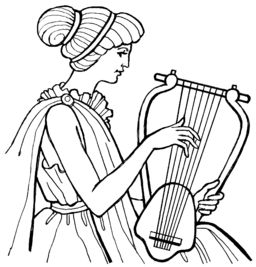“One real revelation for me in these operas, among several: the most typical role of the violas in this period was simply to sustain harmony notes, and in the typical modern setup where the violas are tucked into the middle of the orchestra, they are barely heard. But all those seating plans put them at the extreme edges—separated from each other, so they have no contact as a ‘section.’ Which makes people reluctant to try it, because they are afraid of not being together.
“Well, when they’re at the edges like that, their sound actually carries and is clearly audible in the hall, and all of a sudden the way of writing for them makes total sense and makes a real contribution. I had no idea until walking back during rehearsals to check balance. I’ve been doing Rossini all over the place for 25 years and this is the first time I heard his viola parts make sense. And they don’t need to be ‘together’ with the other violas—they need to be ‘together’ with the cellos and violins near them, and if that is working on both sides of the pit, there is no problem, even though they can’t hear their fellow violists on the far side.
“The whole experience has been fascinating for me in ways like that. By putting it into action, you discover that those people knew what they were doing. There is no way you could perform the viola parts in the Venusberg ballet from opposite sides of the pit—there’s a reason things changed—but the ‘new’ seating actually undermines the function of the old writing. It isn’t about ‘performance practice’ for its own conceptual sake; it is about actual function.'”
˜ ˜ ˜
Hearty thanks to Will Crutchfield for serving as guest blogster, or at least co-host, for today’s post. It’s self-evident that, given my long collegial relationship and friendship with him, I must recuse myself from reviewing the Medea production, a semi-staged one in the Concert Hall on the SUNY, Purchase campus. But I can say that I feel, at second hand, the excitement of all this working discovery, and am certain that it’s what added up to the general sense of alertness and liveliness I felt at the performance. Since I don’t know the opera (my only experience of Mayr has been three isolated excerpts, including one scene from Medea, included on sampler CDs distributed by Opera Rara), and have never A-B’d a Rossini passage, for instance, with violas on the edges vs. violas in their now-normal position, I can’t stipulate much beyond that, and just hope for further high-level exposure to these practices.
As readers of mine know, I have for a long time been reporting the impression I’ve repeatedly had that our technically brilliant orchestras—even those with longstanding pit experience—don’t sound as if they are participating in the drama of the music, or are even aware of what’s being sung, moment-to-moment, on the stage, or what the real event of a given episode is. I’m also regularly deflated by the essentially industrial sight and sound of bosses (conductors & directors) and workers (performers with little creative room left for maneuver). There are exceptions, mostly attributable ( at least from the outside) to one conductor or another or to an individual performer of rare integrity, imagination, and status. But the feeling is fairly pervasive, and weighs just as heavily in late Verdi, Wagner, or Strauss as in Mozart, Rossini, or Mayr. So I’m enthusiastic about any effort to address these aspects of our situation.

